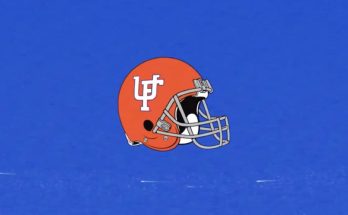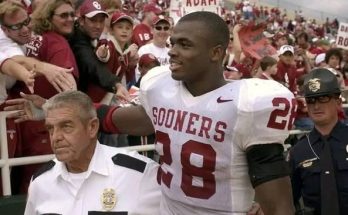As college football programs head into spring practice, coaches are presented with the opportunity to address key positional battles, evaluate their current roster, and establish a foundation for the upcoming season. For Tennessee, a program that has made significant strides under head coach Josh Heupel, the spring exercises in 2025 are particularly crucial as the Volunteers aim to build upon their successes and continue competing at a high level in the SEC.
One of the most important areas of focus in any program’s spring exercises is the offensive line. A team’s offensive line can make or break an offense, especially in a high-paced, high-scoring system like Heupel’s. With an offense that aims to stretch the field and create explosive plays, the offensive line must be both powerful and agile, able to hold off defensive pressure while providing the necessary protection for the quarterback. This breakdown of Tennessee’s offensive line will not only evaluate positional conflicts that are taking place during the spring but will also explore how the team can address these issues moving forward to ensure a successful 2025 campaign.
Tennessee’s Offensive Line in 2024: A Quick Recap
Before diving into the specifics of Tennessee’s spring exercises, it’s important to take a brief look back at the offensive line’s performance in the previous season (2024). Under head coach Josh Heupel, the Volunteers’ offense quickly became one of the most explosive in the nation, with a fast-paced, up-tempo style that relies heavily on the ability of the offensive line to protect the quarterback and create running lanes for ball carriers. The line was anchored by veteran players and had a solid year, allowing the offense to reach new heights.
In 2024, Tennessee’s offensive line was often lauded for its ability to create push in the running game, helping the Vols rack up impressive rushing yards and balance their attack. The Vols also had a productive passing game, which was largely a result of solid protection for the quarterbacks, most notably Hendon Hooker. However, the offensive line wasn’t without its flaws, particularly in pass protection against stronger SEC defenses. There were moments during the season where Tennessee’s offensive line struggled against elite defensive fronts, which led to issues with the quarterback’s time in the pocket and occasionally disrupted the flow of the offense.
Key Positional Battles in Spring Exercises
As Tennessee enters spring exercises in 2025, there are several key positional conflicts to keep an eye on. These battles will determine who emerges as starters on the offensive line and, ultimately, the effectiveness of the Vols’ offense. Let’s break down the most significant positional conflicts and what the coaching staff will be looking for:
1. Left Tackle: Protecting the Blind Side
One of the most critical positions on the offensive line is left tackle. As the blindside protector for the quarterback, this player’s ability to block elite pass rushers is essential. Tennessee’s left tackle position is currently one of the most hotly contested spots heading into the spring. Last season, the left tackle spot saw some rotation, with players like Gerald Mincey and Dane Davis seeing time at the position.
However, neither of them truly established themselves as the clear-cut starter. This creates an opportunity for some young, talented players to step up. Tennessee’s coaching staff is hoping that one of these players will emerge as a consistent force at left tackle, especially as the team faces tough SEC opponents with talented pass rushers.
The position battle here will be crucial in determining how well the Vols can protect their quarterbacks, especially in a system that relies heavily on the passing game. Players competing for the spot will need to demonstrate their footwork, hand placement, and the ability to handle speed rushers off the edge. Strong spring performances will be critical for these players as they aim to lock down the starting job.
2. Center: A Key Anchor
The center position is arguably the most important on the offensive line in terms of communication and leadership. A successful center not only has to execute the basic duties of snapping the ball but also must work with the guards and tackles to ensure the offensive line functions cohesively. In 2024, Tennessee was fortunate to have Cooper Mays, one of the top centers in the SEC, anchoring the position. Mays was a stabilizing force in the middle of the line, and his leadership was a big factor in the offensive line’s overall success.
However, Mays has since graduated, and his departure leaves a void at the center position. The competition at center in the spring is expected to be one of the most closely watched battles. Tennessee’s depth chart includes players like Ollie Lane and Jackson Lampley, who will be competing for the chance to step into the starting role. Lane, who has experience as a guard, may be able to transition into the center position, while Lampley brings size and strength to the table.
The center position battle is significant because the player who takes over will need to establish rapport with the quarterbacks and have a strong grasp of Heupel’s offensive system. This is one position that needs to solidify quickly in the spring to avoid any inconsistencies in the offensive line’s performance during the season.
3. Right Tackle: A Critical Position for Offensive Success
On the right side of the offensive line, the right tackle position will be another hotly contested battle. Right tackle has been an area of concern in recent years for Tennessee, as the Vols have not had a consistent player at the position who can effectively neutralize top pass rushers and generate push in the running game. In 2024, players like Jeremiah Crawford and Dayne Davis saw time at right tackle, but the position was still in flux throughout the season.
Heading into 2025, the coaching staff is hoping that a player like Crawford can step up and claim the job as his own. At 6-foot-6 and 330 pounds, Crawford has the physical tools to dominate at the position, but he needs to improve his consistency and footwork to reach his potential. Davis, another player competing for the spot, is known for his versatility, and could be used at either tackle position depending on the needs of the offense.
The right tackle position will be key for Tennessee’s success in the run game, as the right side of the line is often used for running plays designed to stretch the defense horizontally. This battle will not only impact the passing game but also the ability to establish a balanced attack. Whoever wins the right tackle job will be tasked with helping to create lanes for Tennessee’s running backs and providing solid protection in passing situations.
4. Guard: Protecting the Inside and Building Depth
Both guard positions will also see competition throughout the spring. Tennessee returns several experienced players who will be in the mix, including Jahmir Johnson and Cade Mays. However, Heupel and his staff are hoping that younger players like Cooper Mays’ younger brother, John, will emerge to provide added depth and competition for the starting spots.
Guards are tasked with both run blocking and pass protection, especially on inside rushing plays and when defending against defensive tackles and blitzing linebackers. A successful guard needs to be both quick and powerful, capable of pulling for outside runs while holding strong against the inside rush. The development of Tennessee’s guard positions is crucial for their offensive success in 2025.
Competition at these spots will be important for ensuring Tennessee has a flexible and deep offensive line, with players who can step in when needed and maintain a high level of play.
The Importance of Depth and Chemistry
In addition to the starting positions, the spring exercises will also be crucial for developing depth across the entire offensive line. The SEC is known for its brutal competition, and injuries are often inevitable over the course of a season. A team that has strong depth on the offensive line can weather these challenges and maintain a high level of performance.
Tennessee’s coaching staff will be looking to identify players who can step up and fill roles on the second team. Young players like freshman signees and redshirt sophomores will have an opportunity to prove themselves and earn valuable playing time as the season progresses.
Beyond individual skill sets, the chemistry between the offensive linemen is equally important. Offensive line play is often described as a unit, with all five players needing to work together seamlessly in both the running and passing game. The spring exercises will give the coaching staff the chance to experiment with different line combinations, test out various lineups, and build rapport between the players.



